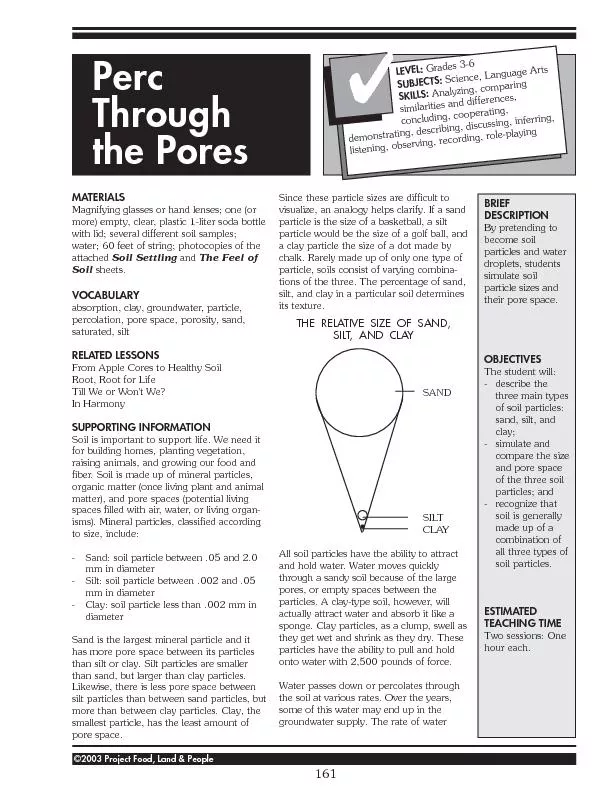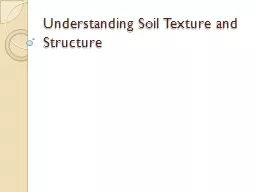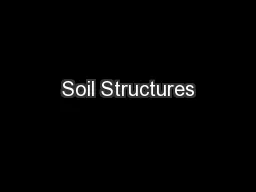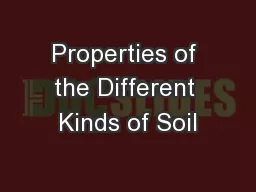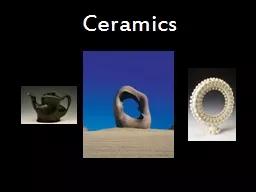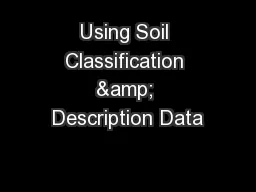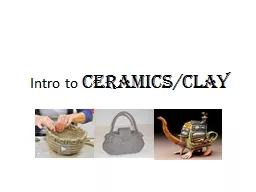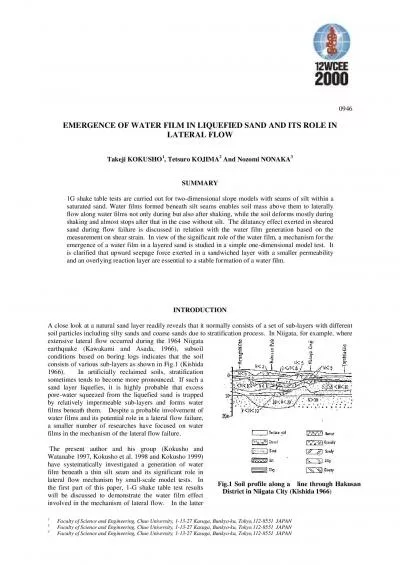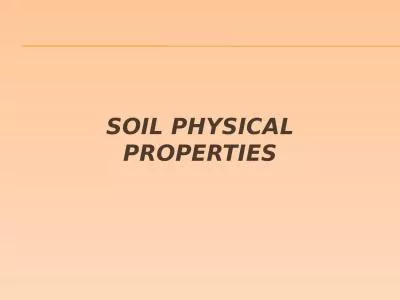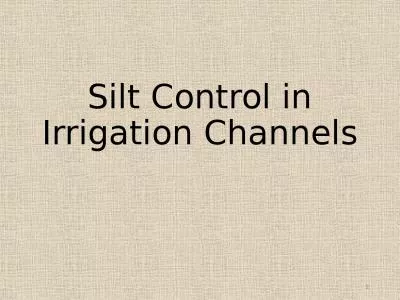PDF-THE RELATIVE SIZE OF SAND,SILT, AND CLAY
Author : sherrill-nordquist | Published Date : 2016-07-11
Download the PowerPoint presentation from the THE RELATIVE SIZE OF SAND,SILT, AND CLAY
Presentation Embed Code
Download Presentation
Download Presentation The PPT/PDF document "THE RELATIVE SIZE OF SAND,SILT, AND..." is the property of its rightful owner. Permission is granted to download and print the materials on this website for personal, non-commercial use only, and to display it on your personal computer provided you do not modify the materials and that you retain all copyright notices contained in the materials. By downloading content from our website, you accept the terms of this agreement.
THE RELATIVE SIZE OF SAND,SILT, AND CLAY: Transcript
. Although there is absolutely no compositional designation assigned to any of the various particle sizes, there is, nevertheless, some size segregation. The estimated range of sizes for each type of particle is indicated by the bracket with the average size indicated by the arrow head. Rock fragments, for example, usually range in size from sand to the largest of particle sizes with an average size being about pebble size. Most quartz grains, on the other hand, ranges in size from pebble to silt with an average size of sand. The only size that uses a mineral name is clay-size, most likely because clay minerals dominate the clay-sized particles.. High-Performance Key-Value Store. Hyeontaek. Lim. , Bin Fan, David G. Andersen. Michael . Kaminsky. †. Carnegie Mellon University. †Intel Labs. 2011-10-24. Key-Value Store. 2. Clients. PUT(key, value). Soil Texture. Soil Texture:. Fineness or coarseness of a soil. What are the three soil particles?. Sand . Silt . Clay. Soil Texture. Why is soil texture important?. It affects. Water-holding Capacity. Soil and Soil Dynamics. APES. Ms. . Tooker. 2015. Rock cycle. Formation. Composition. Physical and chemical properties. Main soil types. Erosion. Soil conservation. Soil and Soil Dynamics. Soil. Thin layer on top of most of Earth’s land surface. Physical . properties are influenced by particle size. Size . Classification (USDA):. Soil . < 2 mm. Sand. , 2 - 0.05 mm. Silt. , 0.05 - 0.002 mm. Clay. , <0.002 mm . The . way a soil “feels” is called the soil texture.. A. Explain the nature and composition of soil;. Soil is the outer layer of the earth. Dirt is displaced Soil. Composition of average soil . a. 25% Air. . b. 25% Water. . c. 5% Organic Matter. . d. 45% Mineral Matter. by Moira Whitehouse PhD. Remember physical properties are the things we can observe about a substance using our five senses.. For soil, the two main physical properties are color and texture.. Texture. Wedging. Working clay on a surface with the palms of the hands in order to remove air from it and obtain a uniform consistency. . Leather hard. The condition of unfired clay when most of the moisture has evaporated leaving it still soft enough to be carved into or joined to other pieces. . (What you Need to Know, Especially for Risk Assessment and Modeling). VAP Spring 2015. Certified Professional Coffee. Soil Classification & . Description. Purpose of training. Briefly review . the most commonly used soil classification . Diabstraksikan. . oleh. : smno.jursntnh.fpub.febr2013 . Diunduh. . dari. : ftp://ftp.fao.org/fi/cdrom/fao_training/FAO_Training/General/x6706e/x6706e06.htm ……… 3/3/2013. Definisi. . Tekstur. 3 Properties that make up clay. 1. Plasticity (ability to form). 2. Porosity (ability to hold moisture). *Similar to a sponge. 3. Vitrify (ability to harden and keep its shape). 3 types of clay. Clay is characterized by it’s iron content (color), vitrification process, and firing temperature.. 0946part, in view of the significant role of water film in a liquefied sand layer, the mechanism of water filmgeneration will be closely studied through a series of one-dimensional model tests.MODEL T Soil Particles . Diameter (mm). Gravel . 2.00 mm. Pine gravel (very coarse sand). 200-1.00 mm. Coarse sand. 1.00-0.500 mm. Medium sand. 0.5-0.25 mm. Fine sand. 0.25-0.10 mm. Very fine sand. 1. Silt problems. Choking of UBDC (1870). Deposition of silt in . MRLink. (9 . ft. out of 14.5 . ft. ). Sedimentation in Reservoirs. 1-2% per year. Tarbela. 30%. Mangla. 30%. Chashma 60%. 2. Methods of Silt Control.
Download Rules Of Document
"THE RELATIVE SIZE OF SAND,SILT, AND CLAY"The content belongs to its owner. You may download and print it for personal use, without modification, and keep all copyright notices. By downloading, you agree to these terms.
Related Documents

